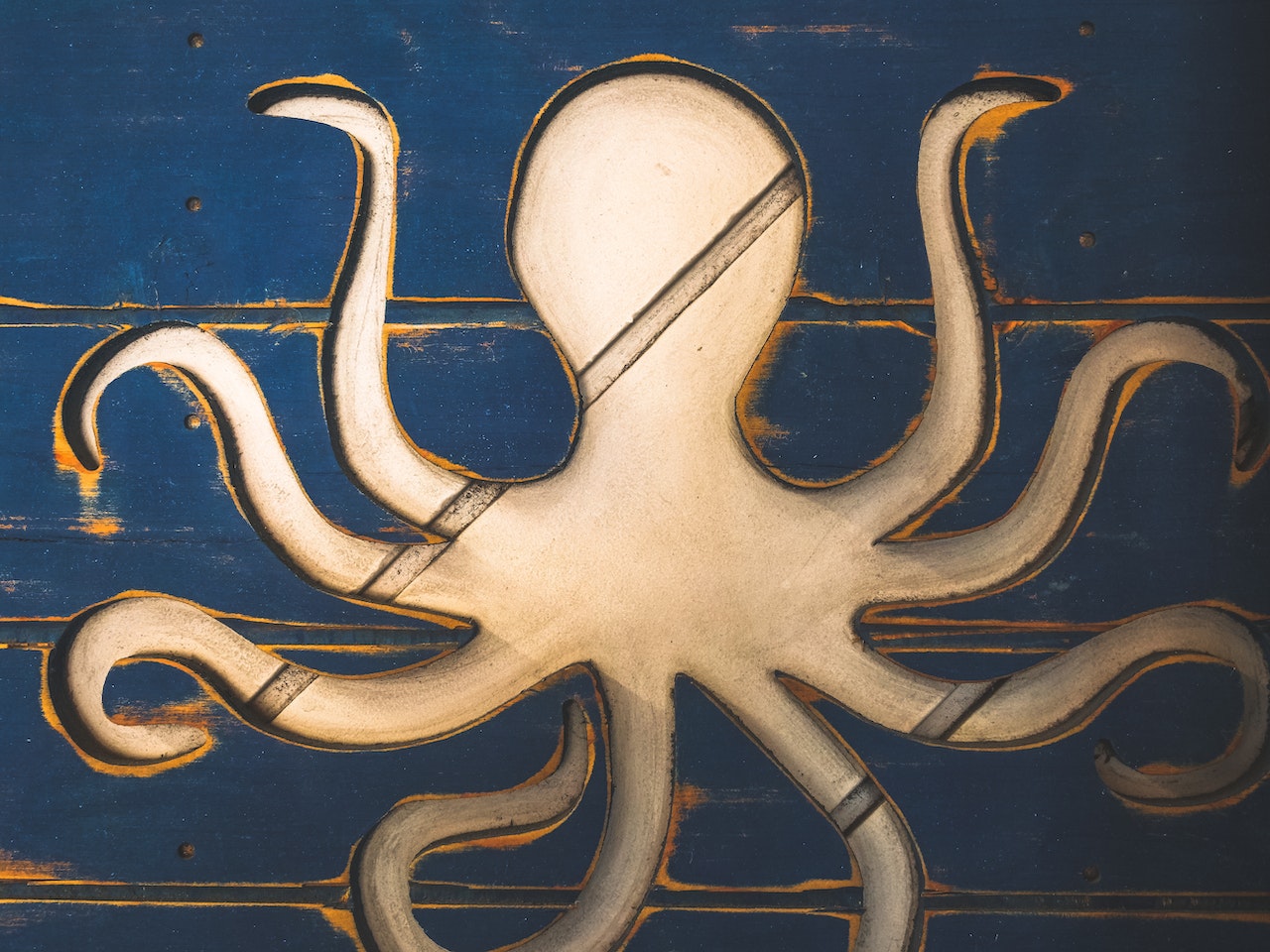The Octopus Business Model and How OYO Uses It
The octopus is one of the most fascinating creatures in the animal kingdom. With eight flexible arms, camouflage abilities, and intelligent problem-solving skills, these mollusks have evolved complex behaviors that seem oddly advanced for invertebrates.
In fact, their very strangeness holds an important business lesson: even if you don’t fit the typical model, with flexibility, strategy, and innovation, you can still thrive in a competitive landscape.
An Alien Among Us
Let’s start with why octopuses seem so bizarre and “alien” compared to other animals.
First, their body plan is unique among mollusks. Unlike clams and snails, octopuses have no protective shell. And unlike most animals, they have no bones at all—their bodies are soft and supported by fluid. This allows amazing flexibility: octopuses can squeeze through incredibly tiny cracks and crevices.
Their arms are a marvel of evolutionary invention. With hundreds of suckers, each arm can act independently and bend anywhere along its length. Some researchers think octopus arms may even “think on their own” to some degree.
Finally, octopuses have the most complex brains of any invertebrate. With over 500 million neurons, they can use tools, solve problems, and show distinct personalities. And their neurons aren’t even centralized, but distributed throughout their arms!
So in a biological sense, octopuses truly are alien outliers. Which brings us to their surprising business model…
An Unconventional Approach
Octopuses survive and thrive, despite breaking all the rules. How? Here are three key elements of their “business model”:
Extreme Flexibility
Octopuses achieve flexibility in every aspect of their existence:
- Physically – They can squeeze into tiny spaces and use their arms in endless creative ways.
- Neurologically – With semi-independent arm brains, they process information uniquely.
- Behaviorally – They have individual personalities and can adapt their hunting strategies.
This total flexibility lets octopuses take advantage of many different niches and opportunities.
Diverse Revenue Streams
Octopuses aren’t locked into one niche—they generate value from many different “revenue streams”:
- Hunting – Using varied techniques like pouncing, trapping, drilling, and venom.
- Scavenging – Octopuses aren’t above scavenging already dead or dying prey. Why not collect some “free income”?
- Shell-stacking – Some octopuses assemble “gardens” of shells to attract prey into traps.
- Den-making – Octopuses build dens for protection and egg-laying. These are assets that can be reused.
Smart octopuses don’t limit themselves. They diversify their skills to take advantage of many opportunities.
Innovation and Strategy
Octopuses don’t play by the rules—they rewrite them through innovation and strategy:
- Tools – Octopuses use tools like shells to open crabs or rocks to block entrances. This expands what they can achieve.
- Mimicry – They camouflage flawlessly and even mimic more dangerous animals. Intelligence gives them an edge.
- Intelligence – From advanced problem-solving to personality, their very minds provide an advantage.
- Trading – Some octopuses mate opportunistically to gain resources from males at low cost. Clever girl!
Constant innovation and strategic thinking let octopuses break from conventional paths and find new ways to succeed.
So in every area of “business”—body, brain, behavior, and strategy—octopuses flaunt convention and write their own rules. And it works. As humans, we can learn from this flexible, innovative, unconventional model.
Key Lessons for Business Success
Though octopuses seem very alien, their success contains insights into human business strategy as well. Here are key lessons we can learn from their example:
Embrace Flexibility
Rather than rigid models, be open and flexible:
- Expand your capabilities and skills over time. Don’t limit yourself to one niche.
- Consider decentralized or cross-functional teams to encourage new perspectives.
- Accept that some “rules” or assumptions may not apply to you. Write your own.
Diversify Your Revenue
Avoid dependence on one income stream. Spread your risk across multiple sources:
- Add new products, services, or business models over time. Look for unmet needs to be filled.
- Leverage existing assets in new ways. An octopus reused shells and dens. How can you reuse it?
- Maintain diverse skills and revenue streams. If one declines, others can compensate.
Innovate Constantly
Convention can be a straightjacket. Keep evolving new strategies:
- Experiment with tools, technologies, or systems to work smarter. Don’t be limited by “how it’s done.”
- Clever thinking can substitute for extensive resources. Use your mind as an “unfair advantage.”
- Learn from other industries or nature. How can their models spark innovation for you?
The octopus shows that flexibility and innovation create options. Don’t let limiting models constrain you—find new paths like our eight-armed alien!
Octopus-Inspired Models for Business
Let’s get specific. We can translate the octopus model into several business frameworks that reward unconventional flexibility and innovation:
Decentralized Teams
Centralized organizations move slowly. Empower decentralized teams like octopus arms to act on their own and respond quickly to opportunities. Set overall goals, then get out of the way.
Hybrid Models
Combine diverse products, services, and monetization models just like an octopus does. Layering ventures creates a resilient “portfolio” and innovative synergies between them.
Leverage Partners
Don’t own everything yourself. Leverage strategic alliances and partners to share costs and skills. Trade opportunities wisely like octopuses do. Stay flexible and asset-light.
Platform Business
Like an octopus den, create a reusable “platform” of assets that can support many revenue streams. Core technology or infrastructure can then be leveraged over and over.
Infinite-Game Strategy
Play the “infinite game” instead of short-term wins. Like an octopus, always seek long-term adaptability and growth. Leave your options open for constant innovation and evolution.
An Octopus-Inspired Culture
To really implement the octopus model, you need an open, innovative culture that rewards flexibility. Some cultural elements to emphasize:
- Experimentation – Constant small experiments beat big risky “bets.” Safe failure lets us learn quickly.
- Diversity – Build teams with diverse backgrounds and skills. Different perspectives spark new strategies.
- Growth Mindset – Seeing abilities as flexible, not fixed, opens more possibilities. Octopuses literally reshape themselves!
- Optionality – Preserve options, don’t overcommit. Stay nimble to adapt as circumstances evolve.
- Decentralization – Local knowledge beats central control. Empower teams to act swiftly on opportunities.
Our human tendency is to oversimplify–to assume models must be uniform. Octopuses prove there are other paths. Embrace the elusive freedom of optionality they exhibit!
How OYO Uses the Octopus Model
The hotel chain OYO utilizes several strategies inspired by the flexible octopus playbook. OYO empowers local teams in each market to customize pricing, branding, and growth strategies based on hyperlocal conditions. This decentralized approach allows faster adaptation, mimicking an octopus arm responding intelligently on its own.
OYO also diversifies its revenue streams across budget hotels, vacation rentals, wedding venues, and more. Its underlying OYO OS technology platform can then be leveraged across all these domains, creating synergies between them. This platform model is much like an octopus reusing shells and dens.
Additionally, OYO innovates rapidly, using iterations and controlled experiments. Examples include dynamic pricing A/B tests, new self-check-in options, and AI-powered predictive maintenance. This experimental mindset mirrors how octopuses constantly invent new hunting strategies.
Finally, OYO fosters a startup culture of individual responsibility, growth mindsets, and cross-functional collaboration. Teams are hybridized across functions like an octopus decentralized brain. This open culture unlocks constant innovation.
Overall, OYO provides an excellent case study of how the octopus model of decentralization, diversification, and innovation can disrupt even mature industries when executed effectively. Other companies can learn from OYO’s flexible application of octopus-inspired strategies.
Related Posts
Conclusion: Think Outside the Shell
The octopus shows that innovation and flexibility offer options beyond traditional models. It’s very weirdness contains lessons on how to thrive in business by doing things differently.
Some key insights to remember:
- Octopuses survive using flexibility, diversity, and innovation–not standardized models
- We can adopt octopus strategies of decentralization, hybrid models, strategic partnerships, and infinite-game thinking
- An open culture encouraging experimentation and growth mindsets unlocks octopus-like adaptation
So don’t limit yourself to assumptions about how things are “supposed” to work. Like an octopus squeezing through a tiny gap, find the openings others miss. Think outside the shell!
The octopus proves you can break the rules and still win. Bring its flexible, inventive approach to your own business model to thrive in a complex world.










